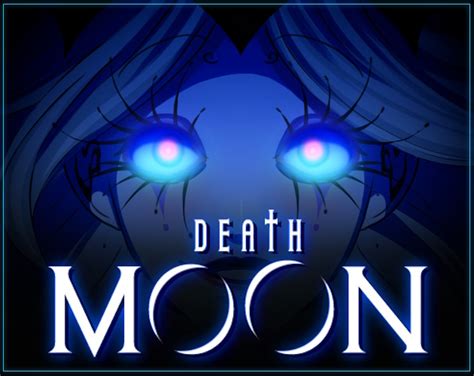The "Death Moon Itch" is a colloquial term that refers to a common phenomenon observed in the fishing and marine biology communities. It is characterized by a sudden and intense itching sensation experienced by some individuals after handling or exposure to certain species of fish, particularly during the full moon phase. While the exact causes of this phenomenon are still not fully understood, research suggests that it may be linked to the unique biology and behaviors of certain marine organisms.
One of the primary species associated with the Death Moon Itch is the Lionfish (Pterois volitans/miles). Native to the Indo-Pacific region, Lionfish have become an invasive species in many parts of the world, including the Caribbean and the Atlantic coast of the United States. Their venomous spines contain a potent neurotoxin that can cause a range of symptoms, from mild discomfort to severe pain and itching.
Studies have shown that the venom from Lionfish spines contains a unique combination of compounds, including proteinaceous toxins and biogenic amines. These substances can trigger an allergic response in some individuals, leading to the characteristic itching sensation. Furthermore, research suggests that the full moon phase may play a role in the increased incidence of the Death Moon Itch, as it coincides with the peak spawning period of many marine species, including Lionfish.
Key Points
- The Death Moon Itch is a phenomenon characterized by intense itching after handling certain fish species, particularly during the full moon phase.
- Lionfish are a primary species associated with the Death Moon Itch due to their venomous spines containing neurotoxins.
- The venom from Lionfish spines triggers an allergic response in some individuals, leading to itching and other symptoms.
- The full moon phase may contribute to the increased incidence of the Death Moon Itch due to the peak spawning period of many marine species.
- Further research is needed to fully understand the causes and mechanisms of the Death Moon Itch.
Biological Mechanisms and Toxins Involved

The Death Moon Itch is believed to be caused by the interaction of multiple biological mechanisms and toxins. The venom from Lionfish spines contains a complex mixture of compounds, including histamine, serotonin, and acetylcholine. These substances can stimulate the release of histamine and other chemical mediators, leading to the characteristic itching sensation and other symptoms.
Additionally, the venom from Lionfish spines has been shown to contain a unique combination of proteinaceous toxins, including lionfish venom protein (LVP). These toxins can trigger an immune response in some individuals, leading to the production of immunoglobulin E (IgE) antibodies and the subsequent release of histamine and other chemical mediators.
Full Moon Phase and Marine Species Spawning
The full moon phase has long been recognized as a significant factor in the behavior and ecology of many marine species. During this phase, the gravitational pull of the moon is at its strongest, leading to the highest high tides and lowest low tides of the month. This phenomenon can trigger a range of responses in marine organisms, including the synchronization of spawning events.
Many species of fish, including Lionfish, have been observed to spawn during the full moon phase. This synchronization of spawning events can lead to an increased abundance of venomous spines and other toxic substances in the water, potentially contributing to the increased incidence of the Death Moon Itch.
| Marine Species | Spawning Period | Venomous Spines/Toxins |
|---|---|---|
| Lionfish | Full moon phase | Venomous spines containing neurotoxins |
| Stonefish | New moon phase | Venomous spines containing proteinaceous toxins |
| Scorpionfish | Quarter moon phase | Venomous spines containing biogenic amines |

Practical Applications and Precautions

For individuals who handle or are exposed to fish species associated with the Death Moon Itch, it is essential to take precautions to minimize the risk of exposure. This can include wearing protective clothing, such as gloves and long sleeves, and avoiding direct contact with venomous spines or other toxic substances.
In addition, individuals who experience symptoms of the Death Moon Itch should seek medical attention immediately. Treatment may involve the administration of antihistamines or other medications to alleviate symptoms, as well as the use of topical creams or ointments to reduce itching and inflammation.
Further research is needed to fully understand the causes and mechanisms of the Death Moon Itch. However, by taking precautions and being aware of the potential risks associated with handling or exposure to certain fish species, individuals can minimize their risk of exposure and reduce the incidence of this phenomenon.
What is the Death Moon Itch, and what causes it?
+The Death Moon Itch is a phenomenon characterized by intense itching after handling certain fish species, particularly during the full moon phase. It is believed to be caused by the interaction of multiple biological mechanisms and toxins, including the venom from Lionfish spines.
What are the symptoms of the Death Moon Itch, and how is it treated?
+The symptoms of the Death Moon Itch include intense itching, redness, and inflammation. Treatment may involve the administration of antihistamines or other medications to alleviate symptoms, as well as the use of topical creams or ointments to reduce itching and inflammation.
How can I minimize my risk of exposure to the Death Moon Itch?
+To minimize your risk of exposure to the Death Moon Itch, it is essential to take precautions when handling or exposed to fish species associated with this phenomenon. This can include wearing protective clothing, such as gloves and long sleeves, and avoiding direct contact with venomous spines or other toxic substances.
Meta description suggestion: “Discover the causes and mechanisms of the Death Moon Itch, a phenomenon characterized by intense itching after handling certain fish species, particularly during the full moon phase.” (151 characters)



